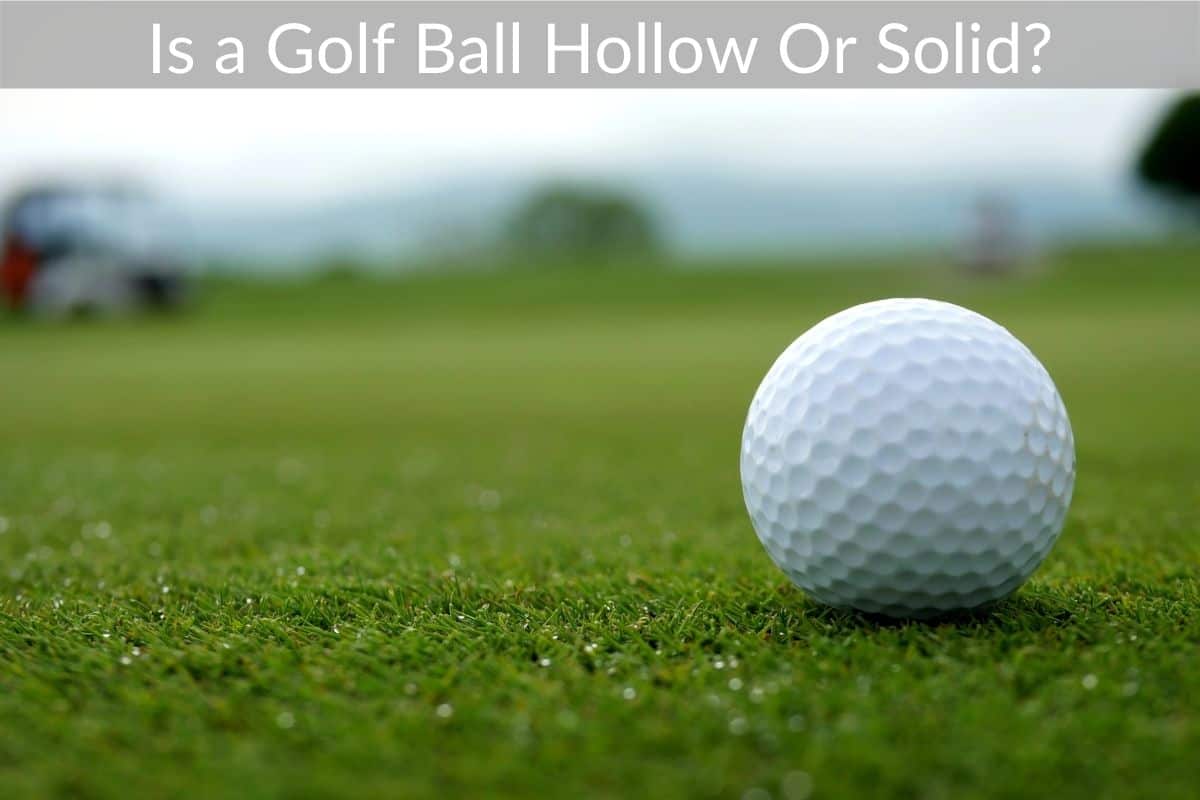Table of Contents
*This post may contain affiliate links. As an Amazon Associate we earn from qualifying purchases.
A whopping 1.2 billion golf balls are manufactured all over the world each year. Of course, it’s easy to research quantities but does everyone know what they are made out of?
If you have a working knowledge of the materials used in golf ball manufacturing, do you know its structural properties? Do you find yourself searching wondering if a golf ball is solid?
For starters – I’m sorry to burst your bubble – but with more than 80 types available, all golf balls are created differently. Each variant is designed to have a profound impact on your game.
Golf balls, for the most part, are solid. A majority of golf balls are produced out of rubber cores. Oftentimes, golf balls even have several layers of many kinds of rubber.
Older golf balls, which are also known as ‘wound balls,’ come filled with rubber threads wrapped around a liquid-injected or solid core.
Now that I have answered your main question, the rest of this article will try to help you decide what type of golf ball is perfect for you. To do so, I’m going to delve deep into the evolution of golf balls and how each core type affects your overall performance in the game.
Where Did Golf Balls Originate From?
The first golf ball in history was made in Scotland during the 15th century. Back then, these balls were made entirely from solid hardwood. Eventually, along came innovators with ideas to advance this creation.
Eventually, they began crafting leather golf balls stuffed with bird feathers.
Still, the biggest change to golf balls came when Robert Adams Paterson designed a golf ball out of gutta-percha in 1848. Basically, this material was rubbery sap that could easily be shaped into a sphere after just a couple of uses.
These balls were a lot cheaper to produce and soon became the most popular kinds of golf balls at that time.
Gutta-percha balls were also the first-ever golf balls to be scored or marked on their outer shell to allow for smoother flight trajectories – which is a forerunner for the dimples on golf balls that we see today.
The Different Kinds of Golf Balls
Different kinds of balls have been created to match different types of gameplay. Traditionally, there has been a trade-off between control and distance. Pro golfers have long preferred higher compression alongside softer outer covers that allow for precise control and a greater spin.
On the other hand, amateur golfers usually prefer balls with softer cores and harder coverings. This preference comes from the fact that they are better at producing more distance.
However, these golf balls aren’t very effective for delicate maneuvers.
Wound Balls
If you have ever dropped or thrown a rubber band ball and seen it bounce, you will already have an idea of the inner workings of the wound balls. Wound balls were first invented in 1898, and they effectively replaced gutta-percha balls and instantly dominated the pro golf scene during the 20th century.
Wound balls are manufactured with central cores, either liquid or solid, which are then wrapped in a couple of rubber threads before being coated.
These types of golf balls are a significant improvement from anything that was used before. Since their complex design features different tensions and layers, various characteristics of the ball could be accentuated to cater to a players’ unique gameplay style.
Wound balls were also lighter, which is why they could fly farther and also achieved higher levels of spin easily. These features made wound balls unlike anything ever before and, therefore, were considered to be perfect for pro golfers.
Solid Multi-Piece Golf Balls
In 1996, like all of its preceding years, wound balls counted for at least 80% of all the golf balls that were being used in the US Open. However, in 2021, at least 85% of the golf balls being used are solid multi-piece golf balls.
So what happened between those years?
Well, Nike was the first among all sports brands to come up with a ball with a solid core. This innovation was targeted at touring golfers during the early 2000s.
Next, Titleist’s fantastic Pro V1 had quickly secured a place in the running before eventually overtaking Nike entirely. Titleist’s solid multi-piece golf balls had pioneered golf balls with urethane coverings.
These coverings were as soft as the balata cover seen on traditional wound balls and, therefore, allowed more controlled spins with the irons.
However, a solid-core ball’s gradation of hardness also meant it traveled greater distances after each drive. Just within two years, these golf balls had replaced wound balls for good, especially in the PGA touring sphere.
One-Piece Balls
Some modern golf balls are an entire piece of synthetic rubber with their dimples directly pitted onto their surface. Often referred to as one-piece balls, these golf ball types aren’t used for serious games.
Golfers will have trouble creating their strike energy into momentum since they don’t have a hard outer surface or a layer of a different material.
Of course, there is also the fact that these types of golf balls are known to deform and become misshapen quickly. Then again, if you aren’t playing serious games or are playing in mini putting courses, these balls will be cheaper.
Two-Piece Balls
The chances are that you started playing golf using this ball. Two-piece golf balls are constructed with a solid rubber core that also has a separate casing on the outside. These balls are rather common at driving ranges and golf clubs and are known to be a popular choice for high-handicap golfers and learners.
Like one-piece balls, two-piece balls are popular among beginners because they are cheaper on their budget, and are perfect for your play if your swinging speed is going to be below 90mph.
Final Thoughts
The evolution of golf balls has witnessed various twists and turns in history, and nowadays, cutting-edge technologies are making them a lot better than before.
But to answer your question, golf balls haven’t always been solid. The evolution of their cores demonstrated that gradually, golf balls transformed from hollow to solid.

